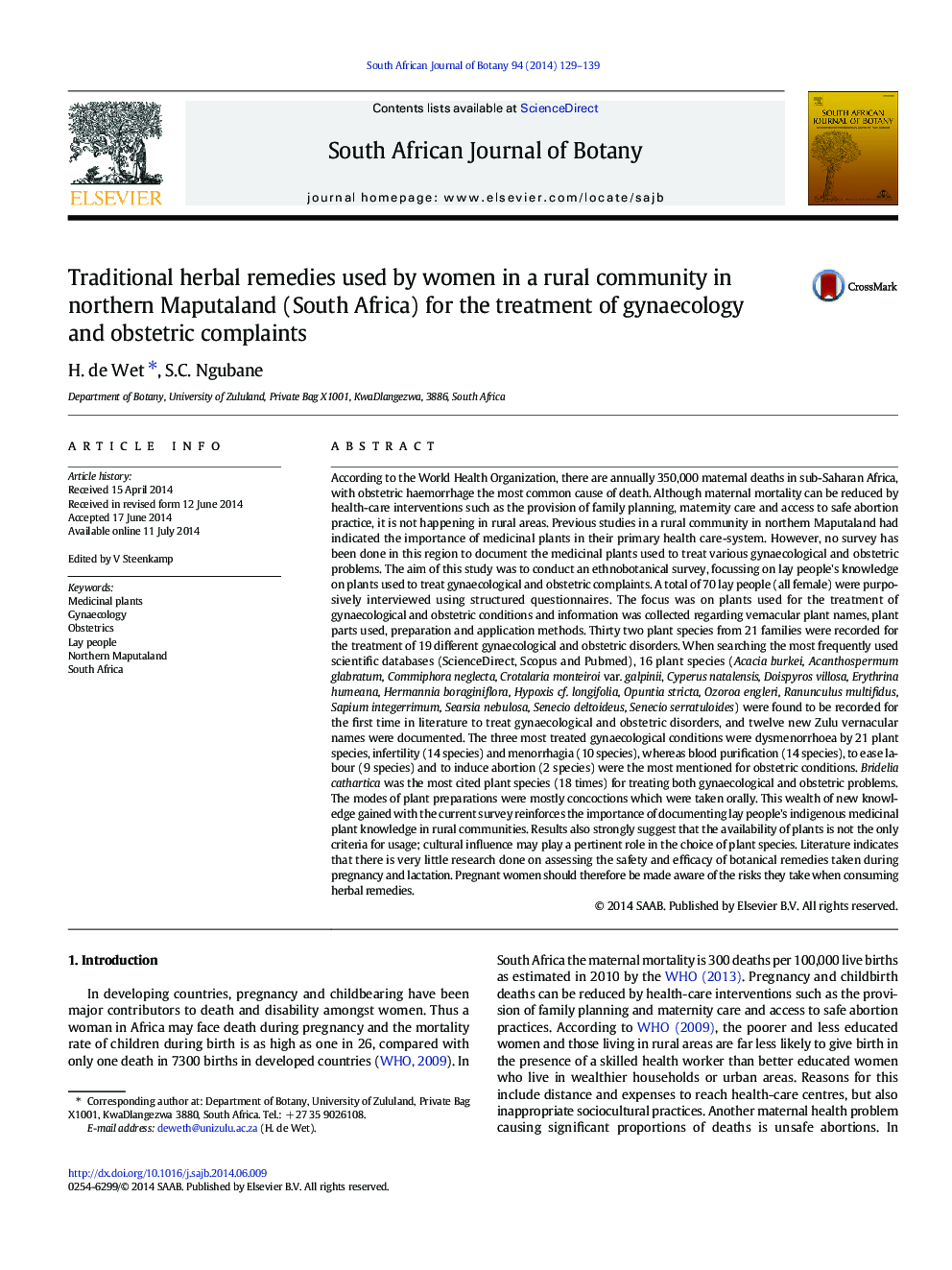| کد مقاله | کد نشریه | سال انتشار | مقاله انگلیسی | نسخه تمام متن |
|---|---|---|---|---|
| 4520669 | 1625164 | 2014 | 11 صفحه PDF | دانلود رایگان |

• Thirty two plant species were recorded to treat 19 different gynaecological and obstetric disorders.
• Sixteen plant species were recorded for the first time to treat gynaecological and obstetric disorders.
• Twelve new Zulu vernacular names were documented.
• The focus was on lay people's knowledge.
• Bridelia cathartica was the most frequently used plant species.
According to the World Health Organization, there are annually 350,000 maternal deaths in sub-Saharan Africa, with obstetric haemorrhage the most common cause of death. Although maternal mortality can be reduced by health-care interventions such as the provision of family planning, maternity care and access to safe abortion practice, it is not happening in rural areas. Previous studies in a rural community in northern Maputaland had indicated the importance of medicinal plants in their primary health care-system. However, no survey has been done in this region to document the medicinal plants used to treat various gynaecological and obstetric problems. The aim of this study was to conduct an ethnobotanical survey, focussing on lay people's knowledge on plants used to treat gynaecological and obstetric complaints. A total of 70 lay people (all female) were purposively interviewed using structured questionnaires. The focus was on plants used for the treatment of gynaecological and obstetric conditions and information was collected regarding vernacular plant names, plant parts used, preparation and application methods. Thirty two plant species from 21 families were recorded for the treatment of 19 different gynaecological and obstetric disorders. When searching the most frequently used scientific databases (ScienceDirect, Scopus and Pubmed), 16 plant species (Acacia burkei, Acanthospermum glabratum, Commiphora neglecta, Crotalaria monteiroi var. galpinii, Cyperus natalensis, Doispyros villosa, Erythrina humeana, Hermannia boraginiflora, Hypoxis cf. longifolia, Opuntia stricta, Ozoroa engleri, Ranunculus multifidus, Sapium integerrimum, Searsia nebulosa, Senecio deltoideus, Senecio serratuloides) were found to be recorded for the first time in literature to treat gynaecological and obstetric disorders, and twelve new Zulu vernacular names were documented. The three most treated gynaecological conditions were dysmenorrhoea by 21 plant species, infertility (14 species) and menorrhagia (10 species), whereas blood purification (14 species), to ease labour (9 species) and to induce abortion (2 species) were the most mentioned for obstetric conditions. Bridelia cathartica was the most cited plant species (18 times) for treating both gynaecological and obstetric problems. The modes of plant preparations were mostly concoctions which were taken orally. This wealth of new knowledge gained with the current survey reinforces the importance of documenting lay people's indigenous medicinal plant knowledge in rural communities. Results also strongly suggest that the availability of plants is not the only criteria for usage; cultural influence may play a pertinent role in the choice of plant species. Literature indicates that there is very little research done on assessing the safety and efficacy of botanical remedies taken during pregnancy and lactation. Pregnant women should therefore be made aware of the risks they take when consuming herbal remedies.
Journal: South African Journal of Botany - Volume 94, September 2014, Pages 129–139